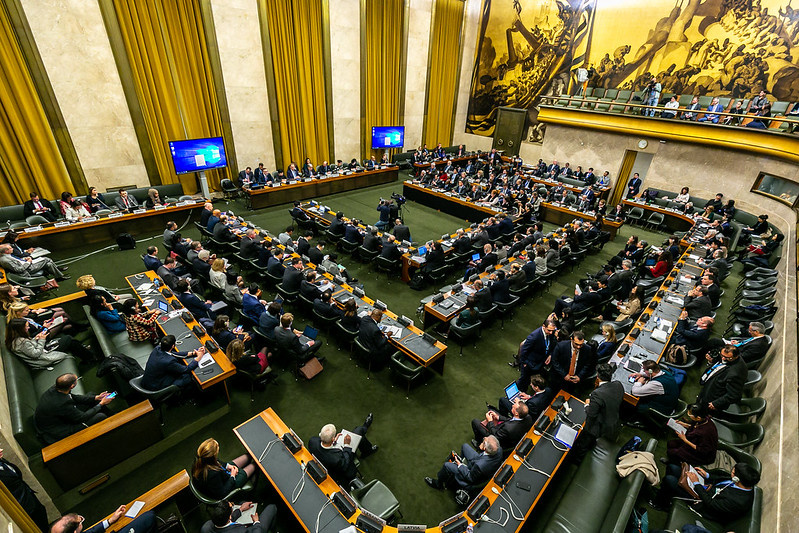Breadcrumb

GROUP OF EXPERTS OF STATES PARTIES TO CONVENTIONAL WEAPONS CONVENTION CONTINUES NEGOTIATIONS ON CLUSTER MUNITIONS

The Second 2008 Session of the Group of Governmental Experts of the High Contracting Parties to the 1980 Convention on Prohibitions or Restrictions on the Use of Certain Conventional Weapons Which May Be Deemed to Be Excessively Injurious or to Have Indiscriminate Effects (CCW) will convene from 7 to 11 April at the Palais des Nations in Geneva.
The Group was mandated by the 2007 Meeting of States Parties to “negotiate a proposal to address urgently the humanitarian impact of cluster munitions, striking a balance between military and humanitarian considerations.” The Group was also requested to negotiate “as rapidly as possible and report on the progress made to the next Meeting of the High Contracting Parties in November 2008.” Under the chairmanship of Ambassador Bent Wigotski of Denmark, the Group of Governmental Experts has made progress towards fulfilling this mandate. At its first meeting of the 2008 session, held from 14 to18 January, the Experts and the Group of Governmental Experts agreed upon text of a draft working definition of cluster munitions as a basis for future work.
For the purposes of the advancing the work, the Chairman has prepared a compilation of the views and inputs expressed by the participants to be used as a basis for discussion. The session is expected to draw heavily upon meetings of the Group’s Military, Legal, and Technical Experts. The Group which will build upon the progress achieved at the January meeting, aims to improve the foundation for further negotiations in subsequent 2008 sessions to be held in July, September, and November.
The issue of the humanitarian impact of cluster munitions has been part of the discussion within the CCW since the Second Review Conference in 2001, under a broader theme of explosive remnants of war. Although there is not yet an agreed final definition of “cluster munitions,” in general these munitions can be described as conventional weapons that can be launched from air, land or sea-based systems; consisting of large munitions container or dispenser filled with smaller sub-munitions (clusters or bomblets) which are scattered over the targeted area. The controversy mainly resides in the humanitarian impact on civilian populations of these weapons both during the conflict and as hazardous unexploded explosive ordnances after the end of hostilities.
The Convention was opened for signature at New York on 10 April 1981 and entered into force on 2 December 1983. It currently has 104 States Parties, and six countries have signed but not yet ratified the Convention. The Secretary-General of the United Nations is the depositary of the Convention.
__________
For use of information media; not an official record
DC08025E
